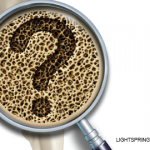Suggested education topics that cover fall-reduction factors include exercise, modifying the home environment for safety, desirable types of footwear, medical management such as vision testing, and proper use of assistive devices. Education may occur as individual or group discussion, supplemented by printed materials as appropriate. A variety of excellent printed and Internet educational resources are available. Examples include:
- What You Need to Know About Balance and Falls: A Physical Therapist’s Perspective. Published by the American Physical Therapy Association, 1999. (www.apta.org/AM/Images/APTAIMAGES/ContentImages/ptandbody/balance/BalanceFall.pdf)
- Check for Safety: A Home Prevention Checklist for Older Adults. Published by the Centers for Disease Control and Prevention (CDC), 2006. (www.cdc.gov/ncipc/pub-res/toolkit/CheckListForSafety.htm)
- What You Can Do to Prevent Falls. Published by the CDC, 2006. (www.cdc.gov/ncipc/pub-res/toolkit/WhatYouCan DoToPreventFalls.htm)
Exercise and training are especially important for individuals with arthritis who are likely to experience problems related to mobility and physical function. Just telling one to exercise is not sufficient; rather, individual instruction and practice are needed. Important exercises include those that increase strength, balance, flexibility, and coordination. One of these that has resulted in positive outcomes, including the reduction of the fear of falling, is tai chi.14, 21 All new exercises should be planned to fit the individual’s abilities and interests, and they should be started slowly and carefully, preferably with the guidance of a physical therapist. When the individual feels comfortable performing the exercises practiced, these can be continued at home. Because adherence has been identified as an issue,15 providers should be sure to ask about activities at each office visit.
Exercise and training is especially important for individuals with arthritis who are likely to experience problems related to mobility and physical function.
Conclusion
Independence is an extremely important aspect of one’s quality of life, and it can be ended abruptly with a fall. Even if the individual makes an adequate recovery, the way one lives and functions can be affected by the fear of taking another fall.22 Rheumatology practitioners can assume a major role in preventing falls and decreasing the fear of falling by recognizing the issue, assessing the individual, and taking a proactive approach to ensure that each person receives appropriate follow-up and ongoing evaluation.
References
- Sturnieks DL, Tiedermann A, Chapman K, Munro B, Murray SM, Lord SR. Physiological risk factors for falls in older people with lower limb arthritis. J Rheum. 2004; 31:2272-2279.
- American Geriatrics Society, British Geriatrics Society, American Academy of Orthopaedic Surgeons Panel on Falls Prevention. Guidelines for the prevention of falls in older persons. J Am Geriatr Soc. 2001; 49:664-676.
- Armstrong C, Swarbrick CM, Pye SR, O’Neill TW. Occurrence and risk factors for falls in rheumatoid arthritis. Ann Rheum Dis. 2005; 64:1602-1604.
- Oswald AE, Pye SR, O’Neill TW, et al. Prevalence and associated factors for falls in women with established inflammatory polyarthritis. J Rheum. 2006; 33:690-694.
- Gregg, EW, Pereira MA, Caspersen, CJ. Physical activity, falls, and fractures among older adults: A review of the epidemiologic evidence. J Am Geriatr Soc. 2000; 48:883-893.
- Lord SR, Sherrington C, Menz HB. Falls in older people: Risk factors and strategies for prevention. Cambridge, UK: University Press; 2001.
- Hannan MT. Epidemiology of rheumatic diseases. In: Robbins L, Burckhardt CS, Hannan MT, DeHoratius RJ, eds. Clinical care in the rheumatic diseases. 2nd ed. Atlanta, Ga.: American College of Rheumatology; 2001: 9-14.
- Braithwaite RS, Col NF, Wong JB. Estimating high fracture morbidity, mortality and costs. J Am Geriatr Soc. 2003; 51: 364-370.
- National Osteoporosis Foundation. Fast facts. Retreived March 31, 2008, from www.nof.org/osteoporosis/diseasefacts.htm
- Nachreiner N, Findorff MJ, Wyman JF, McCarthy TC. Circumstances and consequences of falls in community-dwelling older women. J Women’s Health. 2007; 16:1437-1446.
- Bertera EM, Bertera RL. Fear of falling and activity avoidance in a national sample of older adults in the United States. Health Soc Work. 2008; 33:54-62.
- Friedman SM, Munoz B, West SK, et al. Falls and fear of falling: Which comes first? A longitudinal prediction model suggests strategies for primary and secondary prevention. J Am Geriatr Soc. 2002; 50:1329-1335.
- Jamison M, Neuberger GB, Miller PA. Correlates of falls and fear of falling among adults with rheumatoid arthritis. Arthritis Rheum. 2003; 49:673-680.
- Zijlstra GAR, van Haastregt JCH, van Rossum E, van Eijk JTM, Yardley L, Kempen GIJM. Interventions to reduce fear of falling in community-living older people: A systematic review. J Am Geriatr Soc. 2007; 55:603-615.
- Hill KD, Moore KJ, Dorevitch ML, Day LM. Effectiveness of falls clinics: An evaluation of outcomes and client adherence to recommended interventions. J Am Geriatr Soc. 2008; 56:600-608.
- Health Assessment Questionnaire (HAQ-DI). Retrieved July 31,2008, from http://aramis.stanford.edu/downloads/HAQ%20-%20DI%202007.pdf
- The Health Assessment Questionnaire and the PROMIS HAQ (formerly called the HAQ 100) Stanford University School of Medicine Division of Immunology & Rheumatology (Revised August 2007). Retrieved July 31, 2008, from http://aramis.stanford.edu/downloads/HAQ%20Instructions%20(ARAMIS%20Site)2-14-08.pdf
- Podsiadlo D, Richardson S. The timed “Up & Go”: A test of basic functional mobility for frail elderly persons. J Am Geriatr Soc. 1991; 39:142-148.
- Tinetti ME, Richman D, Powell L. Falls efficacy as a measure of fear of falling. J Gerontol. 1990; 45:P239-P243.
- Swift CG. Identifying risk can reduce fall rates. Practitioner. April, 2007; 251:39-49.
- Haber, D. Health promotion and aging: Implications for the health professions. 2nd ed. New York, NY: Springer; 1999.
- Kalb C. Aging. The meaning of falling. Newsweek. December 11, 2000; 136(24):63-64.

